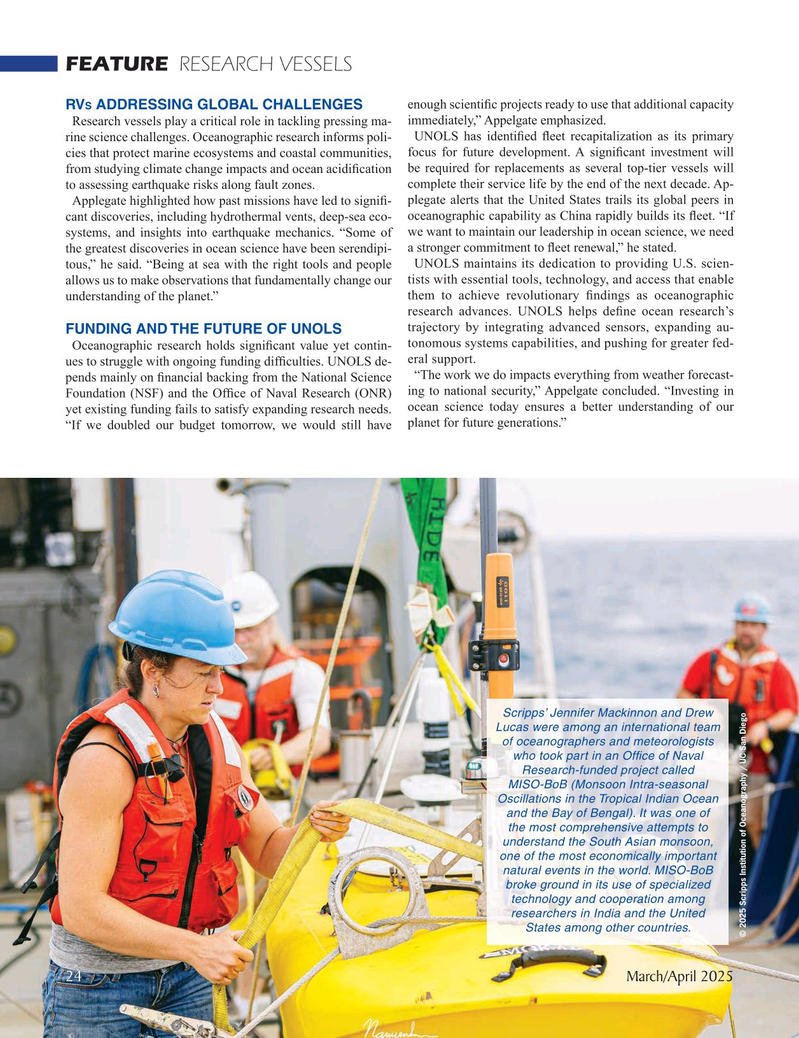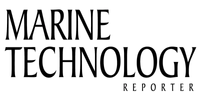
Page 24: of Marine Technology Magazine (March 2025)
Read this page in Pdf, Flash or Html5 edition of March 2025 Marine Technology Magazine
FEATURE RESEARCH VESSELS enough scienti? c projects ready to use that additional capacity
RV ADDRESSING GLOBAL CHALLENGESS
Research vessels play a critical role in tackling pressing ma- immediately,” Appelgate emphasized.
rine science challenges. Oceanographic research informs poli- UNOLS has identi? ed ? eet recapitalization as its primary cies that protect marine ecosystems and coastal communities, focus for future development. A signi? cant investment will from studying climate change impacts and ocean acidi? cation be required for replacements as several top-tier vessels will to assessing earthquake risks along fault zones. complete their service life by the end of the next decade. Ap-
Applegate highlighted how past missions have led to signi? - plegate alerts that the United States trails its global peers in cant discoveries, including hydrothermal vents, deep-sea eco- oceanographic capability as China rapidly builds its ? eet. “If systems, and insights into earthquake mechanics. “Some of we want to maintain our leadership in ocean science, we need the greatest discoveries in ocean science have been serendipi- a stronger commitment to ? eet renewal,” he stated.
tous,” he said. “Being at sea with the right tools and people UNOLS maintains its dedication to providing U.S. scien- allows us to make observations that fundamentally change our tists with essential tools, technology, and access that enable understanding of the planet.” them to achieve revolutionary ? ndings as oceanographic research advances. UNOLS helps de? ne ocean research’s trajectory by integrating advanced sensors, expanding au-
FUNDING AND THE FUTURE OF UNOLS tonomous systems capabilities, and pushing for greater fed-
Oceanographic research holds signi? cant value yet contin- eral support.
ues to struggle with ongoing funding dif? culties. UNOLS de- “The work we do impacts everything from weather forecast- pends mainly on ? nancial backing from the National Science
Foundation (NSF) and the Of? ce of Naval Research (ONR) ing to national security,” Appelgate concluded. “Investing in yet existing funding fails to satisfy expanding research needs. ocean science today ensures a better understanding of our “If we doubled our budget tomorrow, we would still have planet for future generations.”
Scripps’ Jennifer Mackinnon and Drew
Lucas were among an international team of oceanographers and meteorologists who took part in an Of? ce of Naval
Research-funded project called
MISO-BoB (Monsoon Intra-seasonal
Oscillations in the Tropical Indian Ocean and the Bay of Bengal). It was one of the most comprehensive attempts to understand the South Asian monsoon, one of the most economically important natural events in the world. MISO-BoB broke ground in its use of specialized technology and cooperation among researchers in India and the United
States among other countries.
© 2025 Scripps Institution of Oceanography / UC San Diego 24 March/April 2025
MTR #3 (18-33).indd 24 3/13/2025 12:54:10 PM

 23
23

 25
25
